
The controller is one of the three core components of industrial robots and acts as the brain of the robot. Its quality directly determines the performance of the robot. Therefore, whether it is ABB, KUKA, or domestic suppliers like Siasun and Estun, all major industrial robot suppliers have taken control of the controller technology into their own hands.
The development goal of industrial robots is to develop system integration technology, mainframe design technology, and key component manufacturing technology that meet user needs, to break through a number of core technologies and key components, to enhance the reliability and stability of mainstream products with large quantities and wide applications, and to promote the large-scale demonstration application of industrial robots in important industrial manufacturing fields.
As the largest industrial robot market in the world, China’s industrial robot demand accounts for about one-third of the global total. Stimulated by huge demand and supported by national policies, China’s industrial robot industry has made significant progress. According to relevant statistics, from January to November 2017, China’s cumulative production of industrial robots reached 118,170 units, a year-on-year increase of 68.8%, making it one of the fastest-growing products.
Against this backdrop, the market for industrial robot controllers has also experienced explosive growth. It is predicted that the market size for robot controllers will reach 878 million yuan in 2017. Like the robots themselves, controllers and software are generally designed and developed independently by the robot manufacturers.
Currently, mainstream foreign robot manufacturers develop their controllers based on general multi-axis motion control platforms, and each brand of robot has its own matching control system. Therefore, the market share of controllers is generally consistent with that of robots, and domestic companies have yet to form a competitive advantage in the controller market.
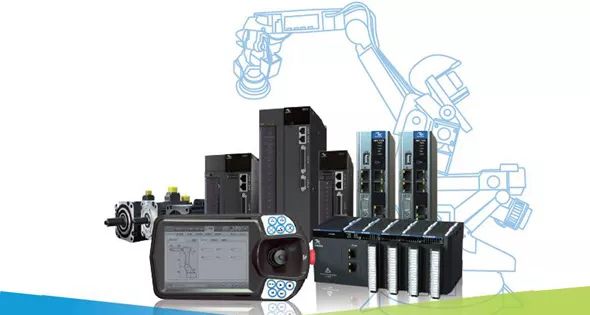
Current Research Status of Industrial Robot Controllers
With the rapid development of microelectronics technology, the performance of processors has become higher and prices lower. Cost-effective microprocessors have made it possible to develop low-cost, high-performance industrial robot controllers.
To ensure the system has sufficient computing and storage capabilities, most industrial robot controllers currently use powerful chips such as ARM series, DSP series, POWERPC series, and Intel series. Additionally, since existing general-purpose chips do not fully meet the requirements of certain industrial robot systems in terms of price, performance, integration, and interfaces, there is a demand for SoC (System on Chip) technology in industrial robot systems, which integrates the required processor and interfaces to simplify the design of peripheral circuits, reduce system size, and lower costs.
Currently, there is no dedicated servo communication bus for industrial robot systems internationally. In practical applications, common buses such as Ethernet, CAN, 1394, SERCOS, USB, and RS-485 are usually used according to system requirements.
In terms of controller architecture, the research focus is on the functional division and the specification of information exchange between functions. In the research of open controller architectures, there are two basic structures: one is based on hardware-level division, which is relatively simple. In Japan, the architecture is classified based on hardware; for example, Mitsubishi Heavy Industries divides the structure of its PA210 portable universal robotic arm into five layers. The other is based on functional division, which considers both hardware and software and is the direction for research and development of industrial robot controller architectures.
Since most hardware is purchased from suppliers, industrial robot manufacturers can almost buy the same hardware, while software often becomes the core of industrial robot controllers. Most industrial robot manufacturers have their own independent development environments and programming languages for industrial robots. Many universities have conducted extensive research on industrial robot development environments (Robot Development Environment) and provided a lot of open-source software that can be integrated and controlled under certain industrial robot hardware structures, with many related experiments conducted in laboratory environments.
With the development of industrial robot control technology, developing “modular and standardized industrial robot controllers with open structures” is a current development direction for industrial robot controllers.
Now let’s take a look at the current status of major industrial robot controller brands at home and abroad.
ABB
The IRC5 controller is an industrial robot controller developed by ABB, consisting of a control module and a drive module, with an optional process module to accommodate custom devices and interfaces, such as spot welding, arc welding, and gluing. This flexible controller equipped with these three modules is fully capable of controlling a 6-axis industrial robot along with servo-driven workpiece positioners and similar devices. To increase the number of industrial robots, simply add a drive module for each new industrial robot, and a process module can also be installed, allowing control of up to four industrial robots operating in MultiMove mode. Only two connection cables are needed between the modules, one for safety signal transmission and the other for Ethernet communication between modules, making module connections simple and easy.
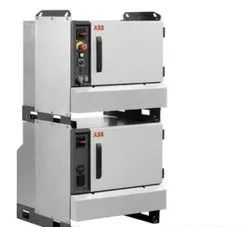
KUKA
The KRC4 is a new system architecture developed by KUKA that is structured clearly and emphasizes the use of open and efficient data standards. All safety control, industrial robot control, motion control, logic control, and process control integrated into this system architecture share the same data foundation and infrastructure, allowing for intelligent use and sharing. This gives the system the highest performance, upgradability, and flexibility.
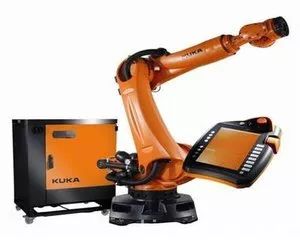
KEBA
KEBA is not an industrial robot manufacturer but is one of the few non-industrial robot manufacturers in the industrial robot controller industry. Its products are industrial-grade servo control systems capable of controlling multi-degree-of-freedom industrial robots. This control system ensures real-time software operating environment through the VxWorks platform or Windows + RTX real-time extension platform, and through motion planning and motion control units, it can achieve precise control of bus-based servo drives.
The KeMotion r5000 series controllers are a complete modular control system for multi-axis motion control, consisting of KeMotion controllers and various peripheral modules that connect to the controller via Ethernet or bus, allowing for various application combinations. The core part of the control system software runs on the controller hardware platform (x86 embedded microprocessor). From the bottom up, the underlying OS is the VxWorks real-time operating system, which provides a foundation for the system’s real-time capabilities and reliability, while also providing a runtime environment for application software.
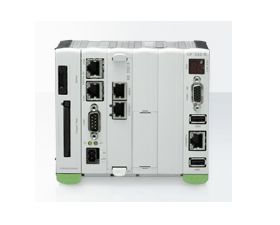
FANUC
The FANUC Robot R-30iA is a new generation industrial robot controller developed by FANUC, featuring high performance, fast response, and strong safety performance. As the only industrial robot controller integrated with vision functionality, it greatly reduces the cost of peripheral devices required for flexible production. Various powerful specialized software for spot welding, gluing, handling, etc., developed based on FANUC’s own software platform, makes the operation of industrial robots simpler while ensuring that the system is immune to computer viruses.
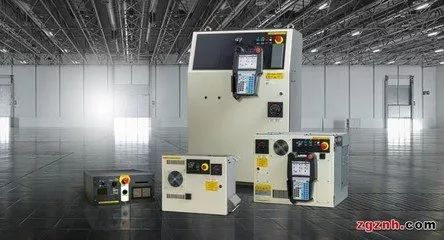
Yaskawa
Yaskawa has developed an open-structured, network-capable industrial robot controller based on PC development. In 2016, Yaskawa also launched a robot controller equipped with artificial intelligence that can automatically set welding conditions and accurately predict the lifespan of the robot body, contributing to the efficiency of startup operations and reducing downtime due to mechanical obstacles.
The AI in the controller can autonomously search for the best welding conditions and reflect them in the actual operations of the robot. Typically, when welding multiple positions, different conditions need to be set. The new controller’s setting work section has achieved automation. In addition to welding, it is also considered for applications in painting, processing, and other areas where fine settings are needed for the robotic arm’s front-end actions.

Siasun
Siasun is a giant in China’s industrial robot industry. Its SIASUN-GRC robot controller has independent copyrights and is a practical, commercialized robot controller developed independently. This robot controller features a reasonable design, advanced technology, superior performance, reliable system, and ease of use. It adopts AC servo drive, absolute encoder detection, and a large-screen Chinese teaching programming box, among other latest technologies, forming an advanced high-performance robot control system. The overall performance of this system has reached an internationally advanced level and is the first commercialized robot controller in China, capable of small-batch production.
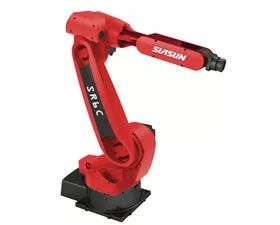
Estun
With nearly 20 years of research and development in the fields of electrical control, servo motors, and controllers, Estun has mastered robot and motion control technology, making it one of the companies with the highest degree of autonomy among domestic robot brands. It is reported that the robot body, controller, software system, and drive control system in Estun’s robot intelligent system are all independently developed.
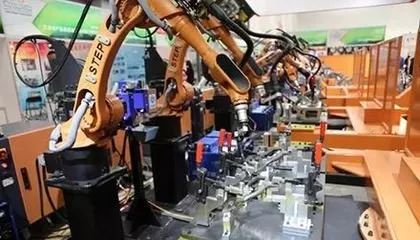
Guangzhou CNC
Based on its rich experience in CNC technology, Guangzhou CNC has complete intellectual property rights for robot controllers, servo drives, and servo motors. The GSK-RC is a robot controller independently developed and produced by Guangzhou CNC, which has independent intellectual property rights.
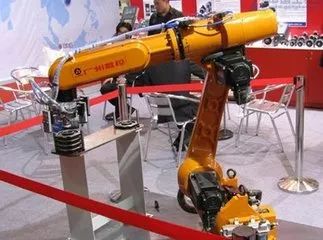
Huazhong CNC
Huazhong CNC developed the Huazhong I-type robot control system as early as 1999. After nearly 20 years of development, it has significant technological advantages in the three core components of controllers, servo drives, and motors. The CCR series is the robot control system primarily developed by Huazhong CNC.
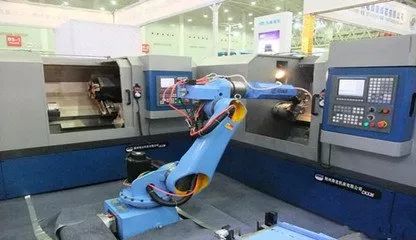
Goko Technology
Goko Technology began researching four-axis robot controllers in 2001 and entered the six-axis robot controller field in 2006, making it one of the earliest companies to study robot controllers in China. As of now, Goko’s control systems cover various types of robots from three axes to eight axes, with the technologically most challenging eight-axis robot control system already capable of mass production.
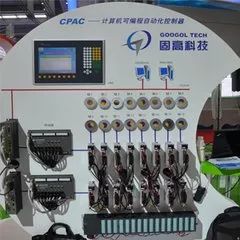
Inovance Technology
Inovance Technology started with inverters and servos and expanded into the controller field in 2013. In 2014, Inovance Technology launched the IMC100 robot controller based on EtherCAT bus and the IS620N bus-type absolute value robot dedicated servo system, currently targeting emerging application fields such as small six-axis, small SCARA, and parallel robots.
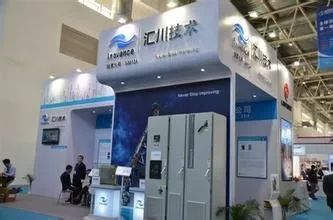
Source: Industrial Robot based on data compiled from Robot Network.
Disclaimer: This article is a network reprint, and the copyright belongs to the original author. Due to the numerous reprints, it is impossible to confirm the true original author, hence only the source of reprint is indicated. If any videos, images, or texts used in this article involve copyright issues, please inform us immediately, and we will confirm the copyright based on the proof materials you provide and pay the remuneration according to national standards or delete the content immediately! The content of this article reflects the views of the original author and does not represent the views of this public account or its responsibility for its authenticity.